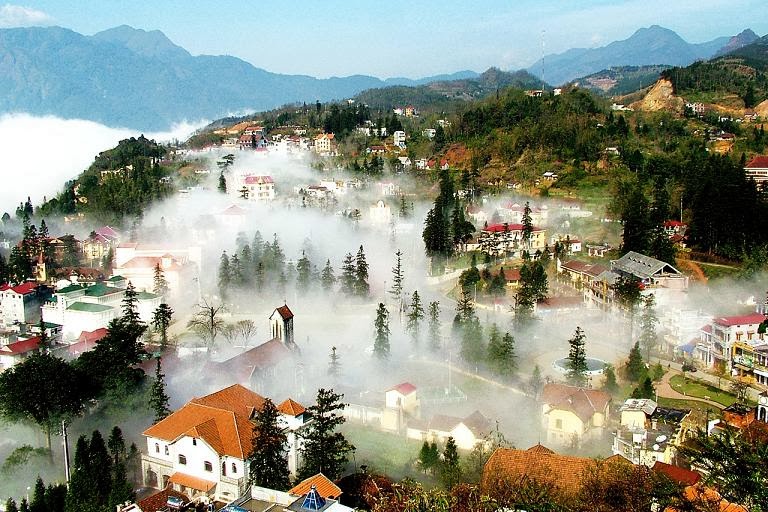| Sapa lies in the very north west of Vietnam near the Chinese border. Along with Halong Bay it is the “other” major excursion from Hanoi. Time permitting you can do a circuit around the northwest highlands which takes in Mai Chau, Son La, Dien Bien Phu, Lai Chau and finally Sapa before heading back to Hanoi. This would take at least a week by private vehicle and longer on local buses. During the wet season roads can be treacherous with landslides common. The best time to visit is from March to May and from September to mid-December. Established as a hill station by the French in 1922, Sapa is the one place in the northwest where tourism is booming. It’s now firmly on the European and North American package-tour circuit, and well-equipped trekkers are a common sight around town.  |
The town is orientated to make the most of the spectacular views emerging on clear days. It overlooks a plunging valley of cascading rice terraces, with mountains towering above on all sides. Views of this epic scenery are often subdued by thick mist rolling across the peaks, but even if it’s cloudy, Sapa is still a fascinating destination, especially when local hill-tribe people fill the town with colour.
The town’s French colonial villas fell into disrepair during successive wars with the French, Americans and Chinese, but following the advent of tourism, Sapa has experienced a renaissance. The downside is a hotel building boom, and because height restrictions are rarely enforced, the Sapa skyline is changing for the worse.
Inherent in this prosperity is cultural change for the hill-tribe people. The H’mong people are very canny traders, urging you to buy handicrafts and trinkets. Many have had little formal education, yet all the youngsters have a good command of English, French and a handful of other languages.

0 nhận xét Blogger 0 Facebook
Đăng nhận xét